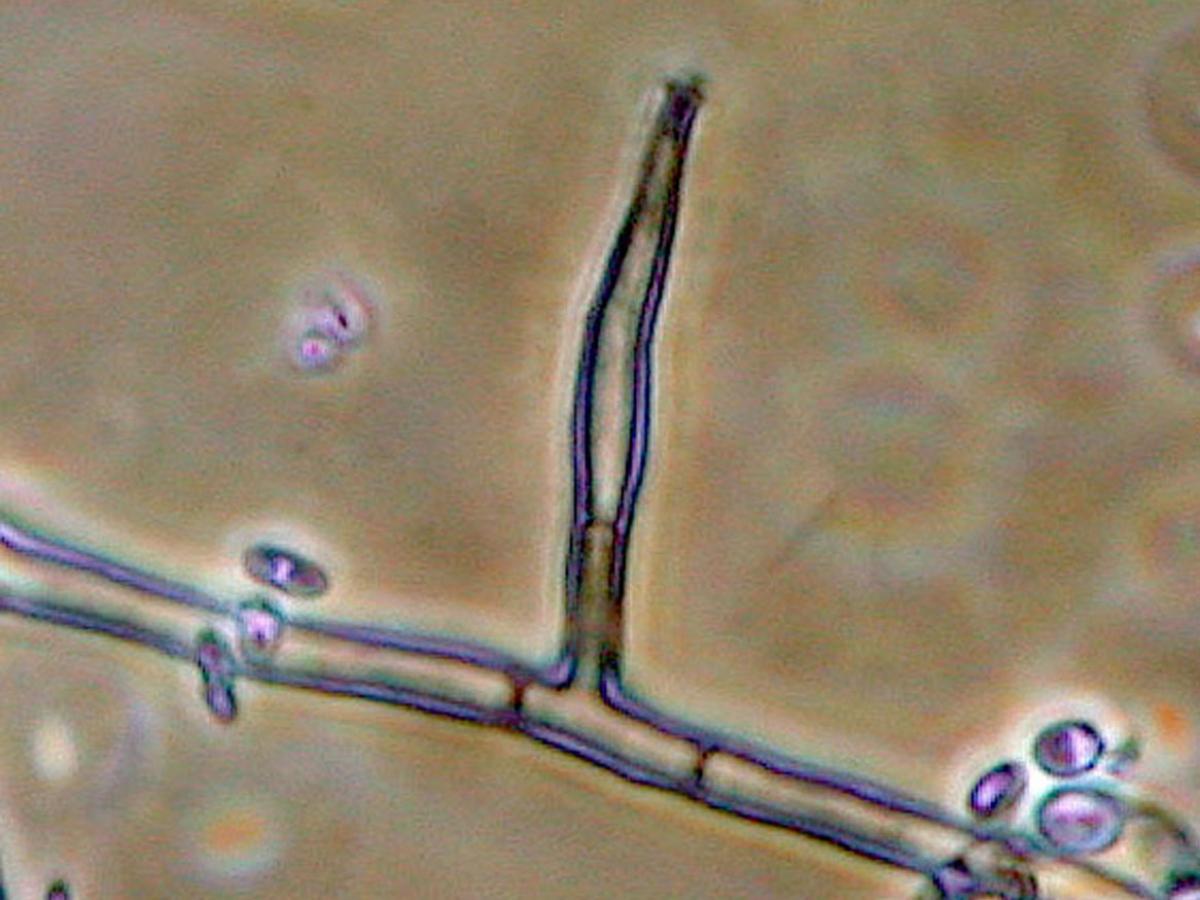Status message
Correct! Excellent, you have really done well. Please find additional information below.
Unknown 9 = Phaeoacremonium parasiticum
Direct microscopy (PAS staining): PAS stained smear of pus from a subcutaneous abscess of the foot showing septate hyphal elements consistent with Phaeoacremonium parasiticum.

Culture: Usually slow growing, suede-like with radial furrows, initially whitish-grey becoming olivaceous-grey with age.

Microscopy: Phialides are brown, thick walled, slender, acular to cylindrical, slightly tapering towards the tip, 15-50 um long, often proliferating, with small, funnel-shaped collarettes.

Conidia often in balls are hyaline, thin-walled, cylindrical to sausage-shaped, 3-6 x 1-2 um, later inflating.

Phialides are thick walled, slender, acular to cylindrical, slightly tapering towards the tip, 15-50 um long, with small, funnel-shaped collarettes.

Comment: Phaeoacremonium parasiticum is a plant pathogen but it has also been reported from cases of subcutaneous infection, arthritis, mycetoma, endocarditis and mycotic keratitis.
About Phaeoacremonium Back to virtual assessment





